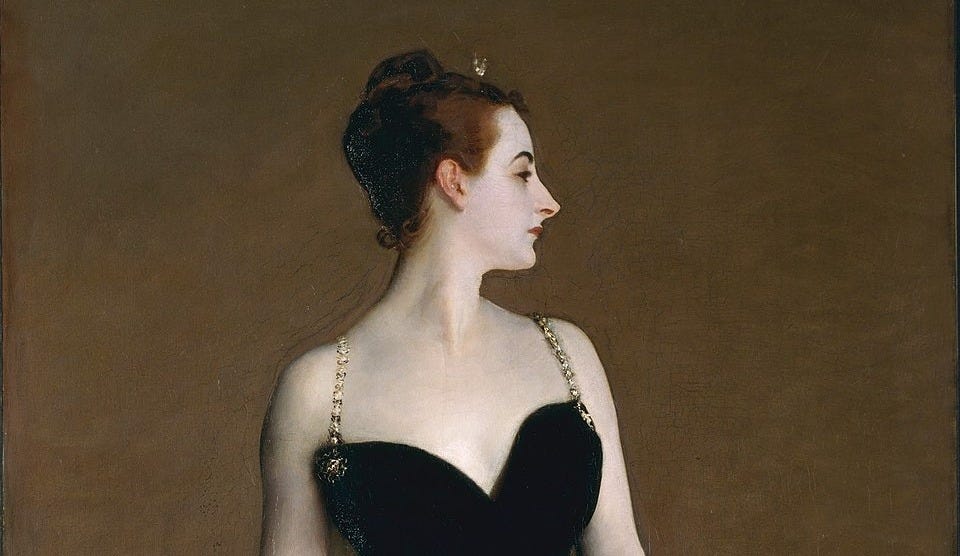The True Story of Madame X
High society, toxic cosmetics, and one loosened strap: on John Singer Sargent's masterpiece, and the woman behind the scandalous icon.

Of all the art critics and patrons in the world, none are so reliable in their predictive powers as the Parisians of the late-19th century. The works they found shocking and scandalous were practically guaranteed to stand the test of time.
Édouard Manet’s Le Déjeuner sur l'herbe (1863), Gustave Courbet’s scenes of working-class life—not to mention, anything by the Impressionists—all were decried as inappropriate, offensive, or just plain bad. The painting we will be examining today is no exception, and we will see that the story of outrage surrounding it is far more complex than that of a loosened strap.
The artist John Singer Sargent was born in 1856 in Tuscany to American parents—the physician Fitzwilliam Sargent and Mary Singer, the daughter of a Philadelphia merchant. The Sargents were expatriates in the true sense of the term; they had journeyed abroad after the death of their first child (a girl w…


